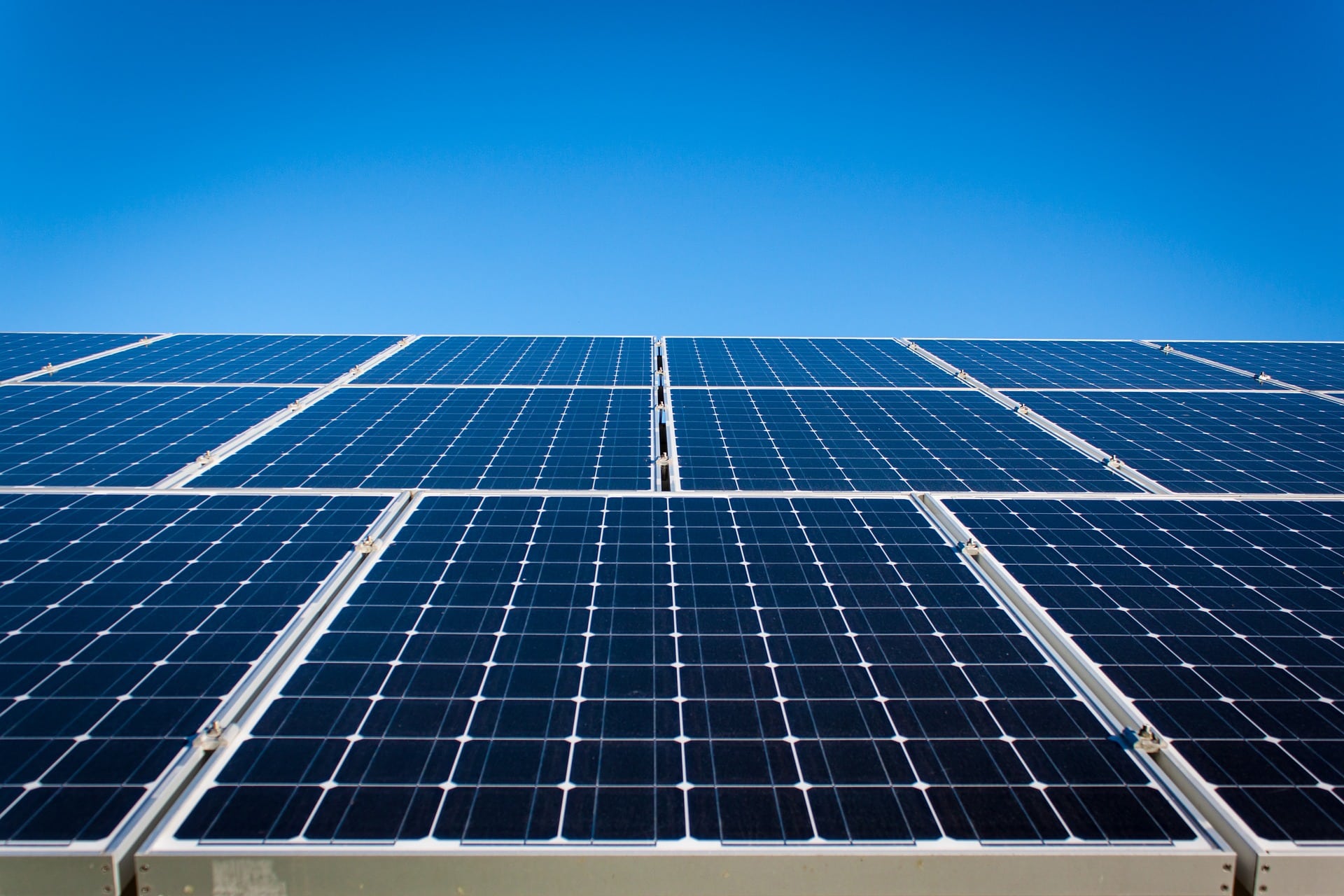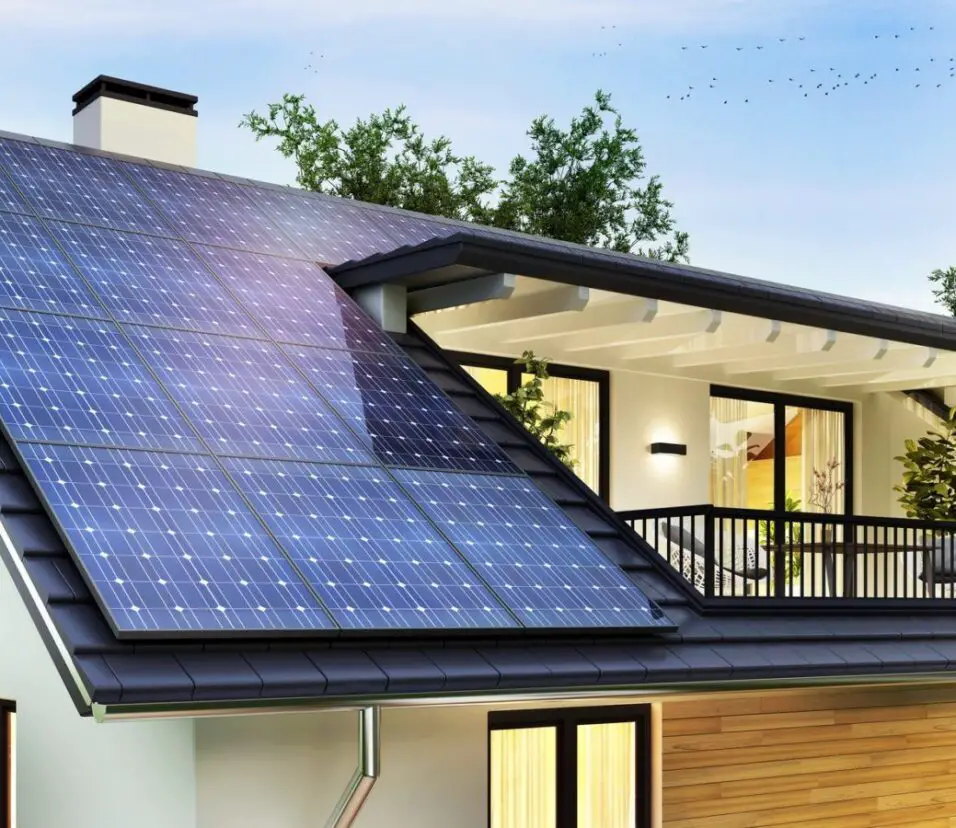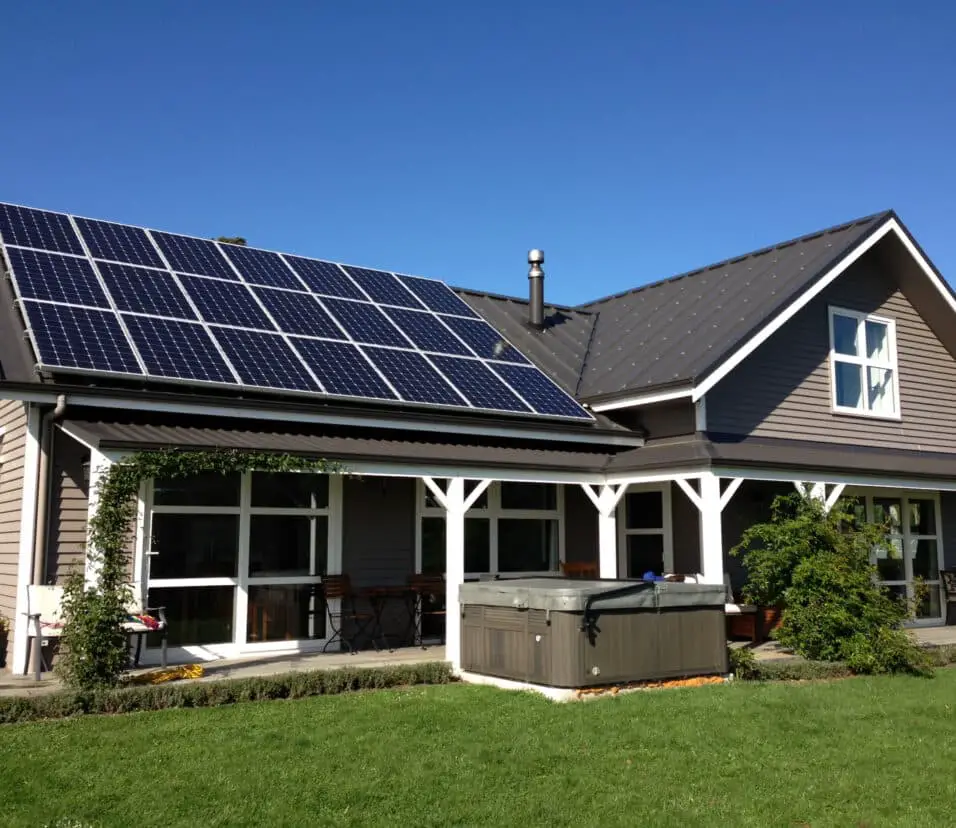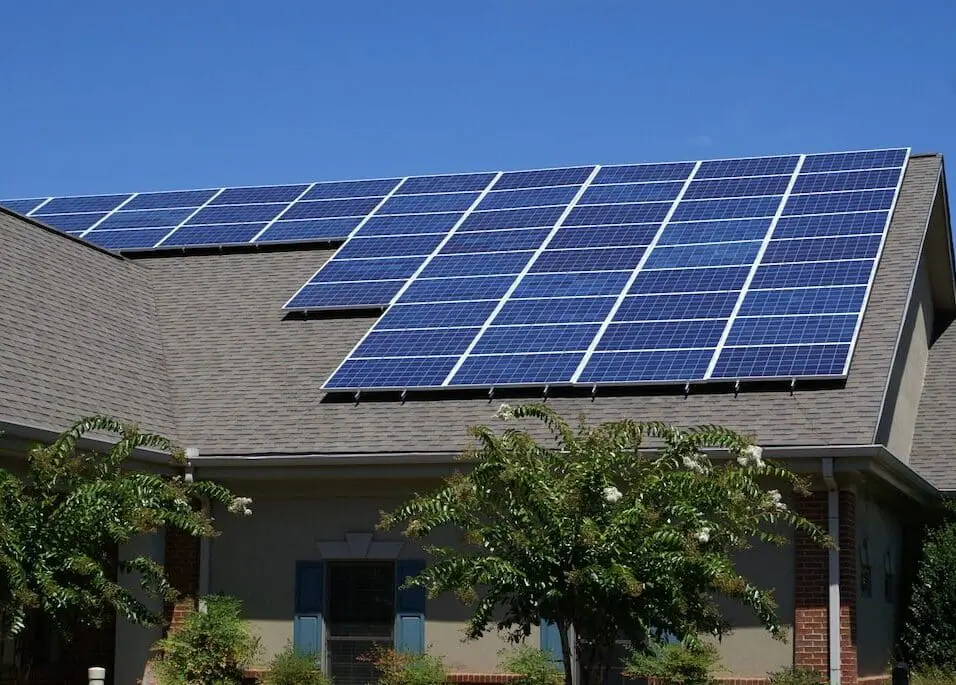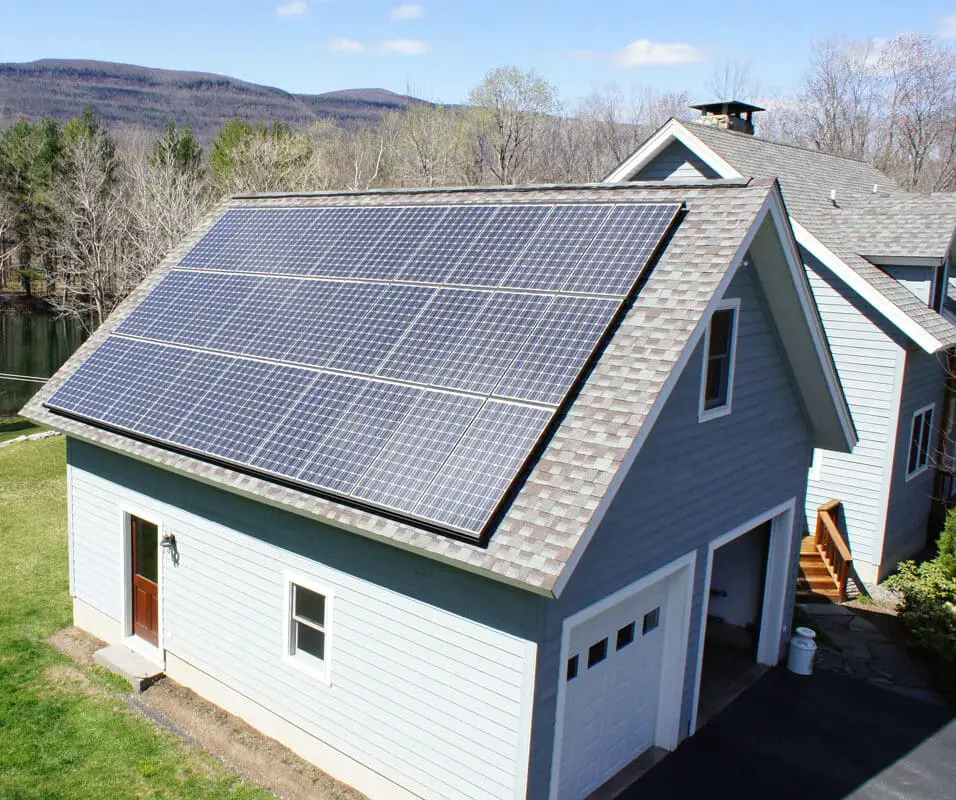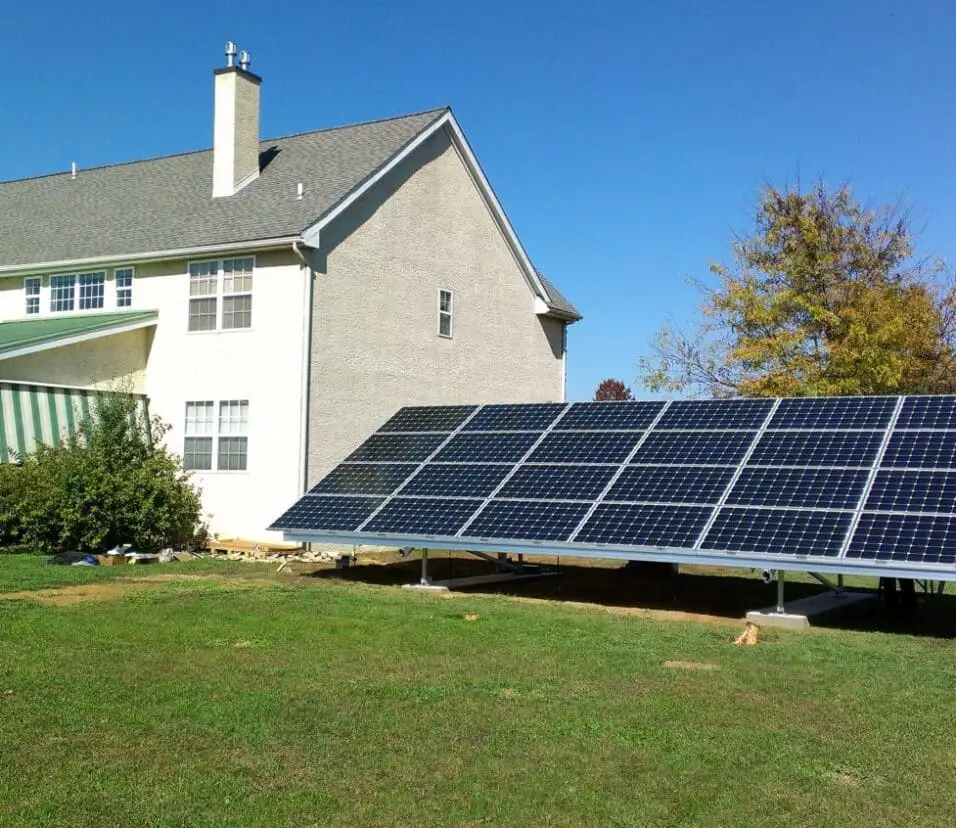How Many Solar Panels And Batteries To Power A House
Introduction
How Many Solar Panels And Batteries To Power A House: With the rapid advancements in solar technology, converting sunlight into usable electricity has become more accessible and affordable than ever before. Solar panels, also known as photovoltaic (PV) panels, serve as the backbone of a solar energy system, capturing the sun’s rays and converting them into electrical energy. However, the number of solar panels needed to power a house depends on several crucial factors, such as the household’s electricity consumption, location, available roof space, and the efficiency of the panels themselves.
By opting for solar power, you not only contribute to a greener planet but also gain energy independence. With the ability to generate your own electricity, you become less reliant on the grid, reducing your vulnerability to power outages and fluctuating energy prices. Moreover, excess electricity generated during sunny periods can be fed back into the grid, earning you potential credits or financial incentives from your utility provider.
As technology continues to evolve, both solar panels and batteries are becoming more efficient and cost-effective. Innovations in battery storage systems ensure a more reliable and stable power supply, allowing homeowners to enjoy uninterrupted electricity during cloudy days or at night. Additionally, some solar panel models now boast higher conversion rates, enabling greater energy output even in limited sunlight conditions.
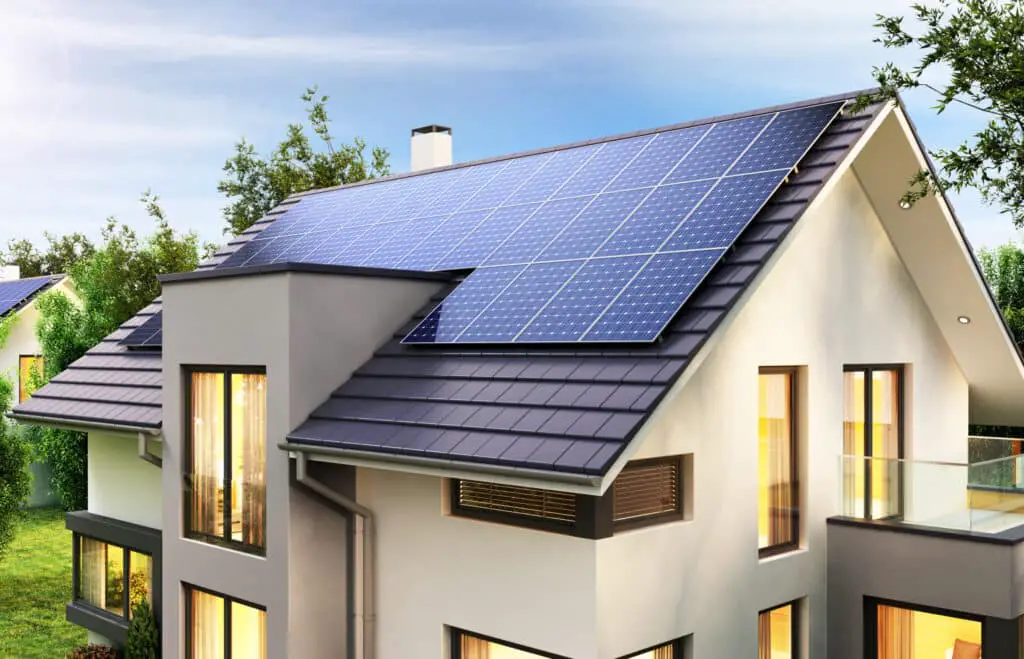
How many solar panels and batteries do you need to power a house?
How many solar panels power a house? Key takeaways. An average home needs between 17 and 21 solar panels to fully offset utility bills with solar. The number of solar panels you need depends on a few key factors, including your geographic location and individual panel specifications.
The first step in sizing your solar system is to analyze your household’s energy consumption. Review your past electricity bills to understand your daily, monthly, and annual usage patterns. This data will provide insights into your electricity needs and help you estimate the number of solar panels required to meet your demand.
Solar panels are the heart of any solar energy system, converting sunlight into usable electricity. The wattage of solar panels typically ranges from 250W to 400W per panel. To calculate the number of panels needed, divide your average daily energy consumption by the wattage of the solar panels and consider the daily sunlight hours in your location.
The amount of sunlight your location receives throughout the year affects the efficiency of your solar panels. Areas with abundant sunlight, such as deserts or sunbelt regions, will yield more electricity compared to regions with frequent cloud cover or shading. To optimize your solar system’s performance, assess the solar potential of your location using solar irradiance data.
The available roof space and orientation play a significant role in determining the number of solar panels you can install. South-facing roofs in the Northern Hemisphere and north-facing roofs in the Southern Hemisphere tend to receive the most sunlight. Moreover, shade-free areas on your roof ensure maximum solar exposure, so plan the panel layout accordingly.
How many solar panels does it take to fully power a house?
An average-sized home in the United States (2,480 square feet) will need about 15 to 22 full-sized solar panels to completely replace traditional energy sources. That being said, the exact number of solar panels needed for your house depends on several other factors.
The first step in determining the number of solar panels needed is to understand your household’s energy consumption. Review your past electricity bills to get an average of your daily, monthly, and annual energy usage. This data will serve as a crucial reference point to estimate the solar capacity required to meet your household’s electricity needs.
Solar panel efficiency refers to how effectively panels convert sunlight into electricity. Higher efficiency panels produce more electricity with the same amount of sunlight. When selecting solar panels, it’s essential to balance efficiency with budget considerations. More efficient panels may be more expensive, but they require less roof space to generate the same amount of power.
Solar panels are typically rated in watts (W) or kilowatts (kW). To calculate the number of solar panels needed to fully power your house, divide your daily energy consumption (in kilowatt-hours) by the average daily peak sun hours in your location. The result will give you the required solar panel capacity in kW.
The amount of sunlight your location receives significantly impacts the performance of your solar panels. Sunbelt regions or areas with abundant sunshine will generate more electricity compared to regions with frequent cloud cover or shading. Before finalizing the number of solar panels, consider the solar potential of your location using solar irradiance data or consult with solar experts.
How do you calculate how many solar panels and batteries do I need?
How much solar power will you need? To determine your home’s average energy requirements, look at past utility bills. You can calculate how many solar panels you need by multiplying your household’s hourly energy requirement by the peak sunlight hours for your area and dividing that by a panel’s wattage.
Consider your location’s solar potential. Regions with abundant sunlight, such as sunbelt areas, will produce more electricity compared to regions with frequent cloud cover or shading. Evaluate solar irradiance data to estimate the expected solar energy output in your area.
If you wish to store excess solar energy for use during non-sunlight hours, calculate your battery capacity. Determine your daily energy consumption during those hours and select a battery system that meets your requirements. Battery capacity is typically measured in kilowatt-hours (kWh).
Solar panels experience slight efficiency degradation over time. Most panels have a warranty guaranteeing a specific output level after 25 years, usually around 80-85% of the original capacity. To account for this degradation, add a few extra panels or adjust battery capacity to maintain sufficient electricity generation over the system’s lifespan.
Designing a solar energy system can be complex, especially when considering various factors. Seeking guidance from solar experts or qualified installers is beneficial. They can conduct a site assessment, analyze your energy needs, and recommend the appropriate number of solar panels and batteries for your home.
How much is 1 solar panel with battery?
There are many factors that affect the solar panel 1kw price in India. There’s not one price tag but a price range: ₹45,000 to ₹70,000.
The cost of a solar panel is primarily determined by its wattage (W) or kilowatt (kW) capacity, brand reputation, and efficiency. Higher wattage panels and more reputable brands often come with a higher price tag. On average, a single solar panel can range from $150 to $500 or more, depending on its specifications.
The cost of solar batteries varies depending on the battery type, capacity, and brand. Lithium-ion batteries are a popular choice due to their high efficiency and longer lifespan. On average, the cost of a solar battery can range from $500 to $2,000 or more per kilowatt-hour (kWh) of capacity.
Solar panels generate direct current (DC) electricity, while most household appliances use alternating current (AC). An inverter is necessary to convert DC electricity into AC electricity for household use. The cost of inverters depends on their capacity and efficiency, with prices ranging from $500 to $2,500 or more.
Installation costs include labor, permits, and other equipment required to set up the solar panel and battery system. Installation costs can vary based on the complexity of the installation, location, and any additional electrical work needed. On average, installation costs can range from $3,000 to $10,000 or more.
What are the 3 types of solar panels?
In this blog, we will explore the main three types of solar panel cells: polycrystalline, monocrystalline and thin-film.
Monocrystalline solar panels are known for their high efficiency and sleek black appearance. They are made from single-crystal silicon, which is extracted in a process that involves cutting thin wafers from a single, pure silicon crystal. This method results in a highly pure and uniform material, allowing electrons to move more freely, leading to higher conversion efficiency.
Polycrystalline solar panels are made from multiple silicon crystals, resulting in a less uniform appearance with a blueish hue. The manufacturing process involves melting raw silicon and casting it into square-shaped molds, which makes it more cost-effective compared to monocrystalline panels.
Thin-film solar panels are manufactured by depositing thin layers of photovoltaic material onto glass, plastic, or metal substrates. Unlike crystalline panels, thin-film panels do not use silicon as the primary material. The three main types of thin-film panels are amorphous silicon (a-Si), cadmium telluride (CdTe), and copper indium gallium selenide (CIGS).
Each type of solar panel has its strengths and weaknesses, making the choice dependent on individual needs, budget, available space, and desired efficiency. When selecting a solar panel type, it’s essential to consider your specific requirements and consult with a solar expert to make an informed decision that suits your energy goals and financial constraints.
Does solar panel work at night?
The short answer is: no, solar energy systems only operate during the day. This is because the power from the sun is key to how a solar panel turns light into electricity.
Solar panels work best in bright sunlight. Sunlight intensity, angle, and shading or obstructions affect their energy production.
Solar panels create electricity during the day and store it for later use. This is where battery storage systems matter. Batteries can store excess solar panel electricity for use at night or when the sun isn’t shining.
Battery storage devices help households maximize solar energy benefits by storing and using extra electricity. Solar-plus-storage is this idea. Battery power ensures energy independence by supplying electricity after sunset.
Some residences have battery storage and link to the grid to draw power at night or on overcast days when the solar panels aren’t producing enough. This is a net-metered grid-tied solar system. Solar panels can feed extra electricity back onto the grid during sunny days, giving homeowners credits or cash incentives from the utility provider.
Do solar panels work in winter?
Even in below-freezing weather, solar panels turn sunlight into electricity. That’s because solar panels absorb energy from our sun’s abundant light, not the sun’s heat. In fact, cold climates are actually optimal for solar panel efficiency.
During winter, the days are shorter, which means there is less daylight available for solar panels to generate electricity. The reduced daylight hours can lead to lower energy production compared to the longer days of summer. However, even in winter, there are still several hours of sunlight each day, allowing solar panels to generate a significant amount of electricity.
Contrary to popular belief, cold temperatures can actually improve the efficiency of solar panels. Solar panels function more efficiently at lower temperatures, and this can lead to a slight increase in energy production. The efficiency gains from cold temperature performance often offset the impact of reduced daylight hours in winter.
Snow accumulation on solar panels can temporarily reduce energy production. However, solar panels are designed with smooth surfaces and a slight tilt, which helps snow slide off quickly. Additionally, solar panels are dark-colored, which aids in absorbing sunlight and melting snow faster. In regions with heavy snowfall, homeowners can also install snow guards or use a soft broom to gently clear snow from the panels.
The angle at which sunlight strikes the solar panels affects their efficiency. During winter, the sun’s angle is lower in the sky, which means the sunlight has to pass through more atmosphere, reducing its intensity. However, modern solar installations are often designed with adjustable mounting systems that can be tilted to optimize the angle of the panels for the winter sun.
Do solar panels need cleaning?
Solar panels absorb sunlight more when they are clean. Many ask if solar panels need cleaning. Yes. Solar panels may need weekly or monthly cleaning, depending on kind.
Dirt, dust, and other debris on solar panels can block sunlight from reaching photovoltaic cells. This decrease in sunlight absorption lowers energy production and solar energy system efficiency.
Climate, dust sources, and panel tilt affect solar panel cleaning frequency. Dust and pollen-laden regions may require more frequent cleaning.
Automatic cleaning is used in some solar panel installations. These systems clean panels periodically with robotic brushes or water jets, decreasing manual cleaning. While automatic cleaning is easy, it’s important to maintain and properly use the system to minimize damage.
Solar panels must be cleaned periodically to maximize energy production. Regular cleaning removes dirt and debris that blocks sunlight absorption, optimizing solar panel performance. Clean and efficient solar energy systems can serve households for years by following correct cleaning methods and considering automatic cleaning solutions.

Conclusion
Understanding your household’s energy consumption patterns is fundamental to determining the right number of solar panels. By conducting an energy audit, you can identify your electricity needs and size your solar system accordingly, ensuring it meets your daily requirements while potentially allowing for surplus energy generation. Beyond the environmental benefits, solar power can also lead to long-term savings on electricity bills and potentially offer financial incentives through net metering and energy credits.
Moreover, assessing the solar potential power house of your location is crucial. Factors such as the average amount of sunlight, weather patterns, and shading will impact the efficiency of your solar panels and the overall performance of the system. Maximizing the solar potential of your property will help you reap the most benefits from your investment. Battery storage systems play an essential role in ensuring a continuous power supply, enabling you to utilize solar energy even during times when the sun is not shining.
The number and capacity of batteries required will depend on your energy usage patterns and the degree of energy independence you wish to achieve. When considering the installation of solar panels and batteries, keep in mind that technological advancements and government incentives continue to make renewable energy solutions increasingly accessible and cost-effective. It is essential to stay updated on the latest developments in solar technology and regulations to make the most informed decisions for your home.



